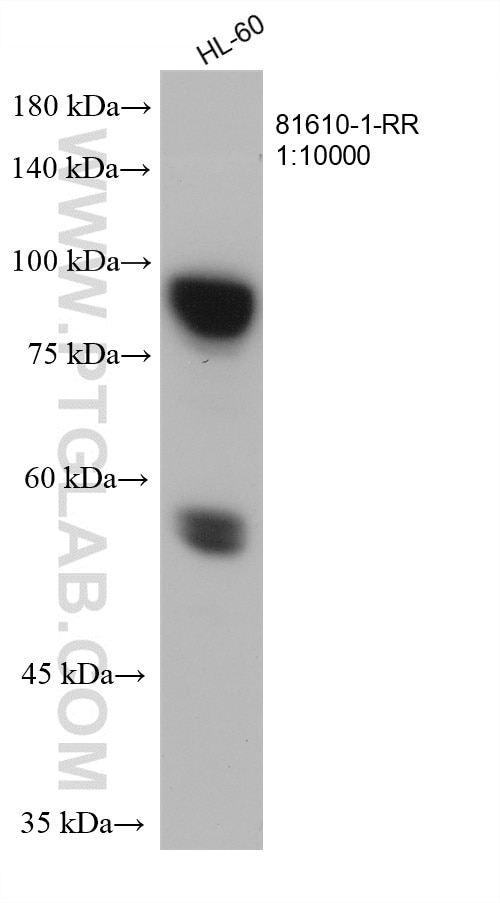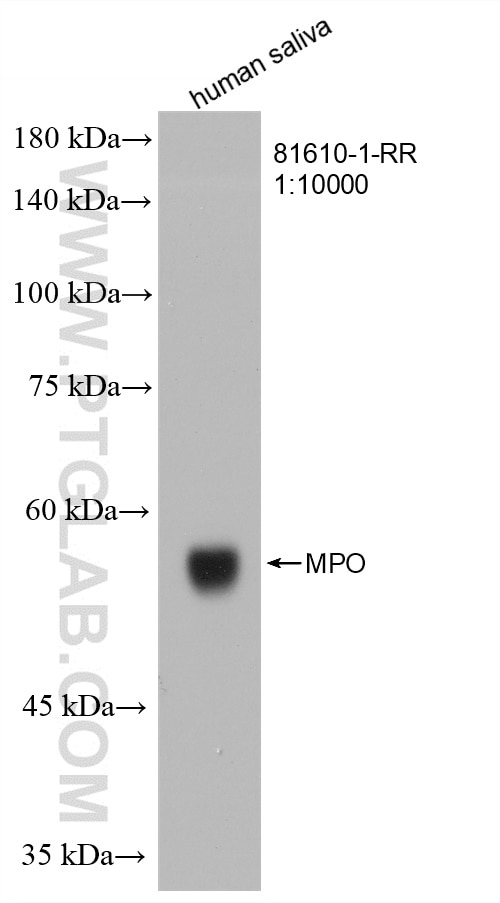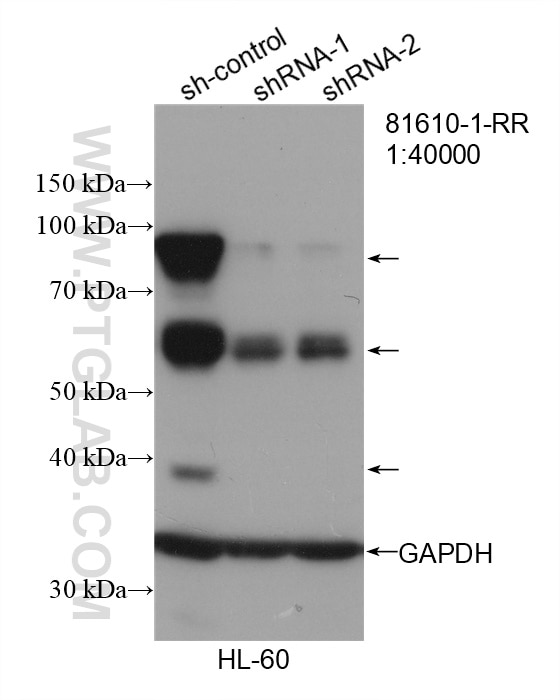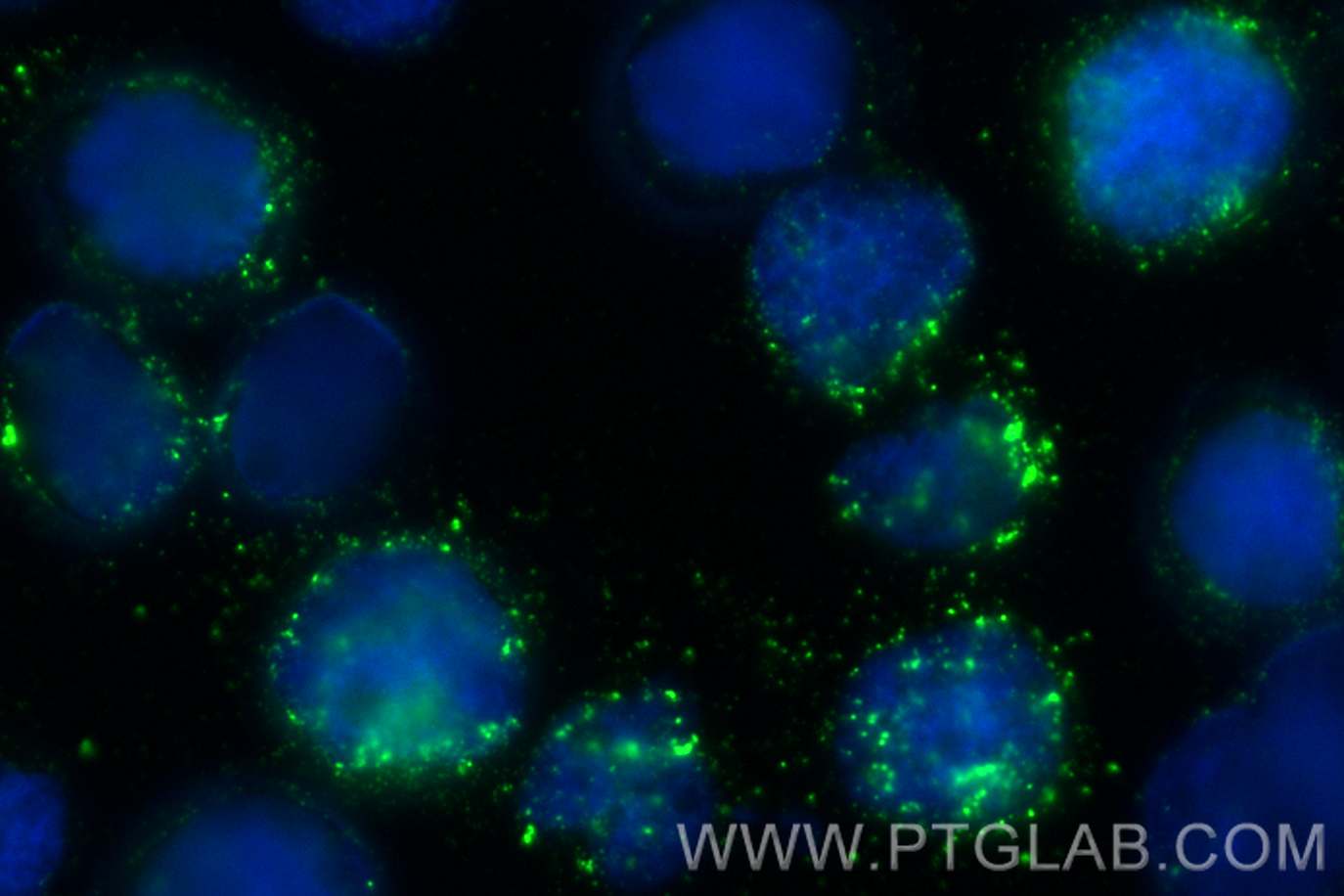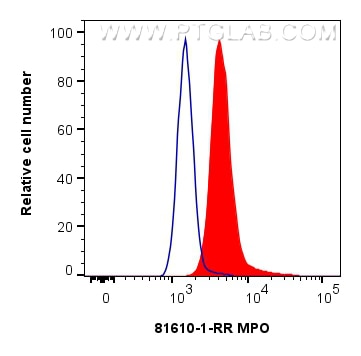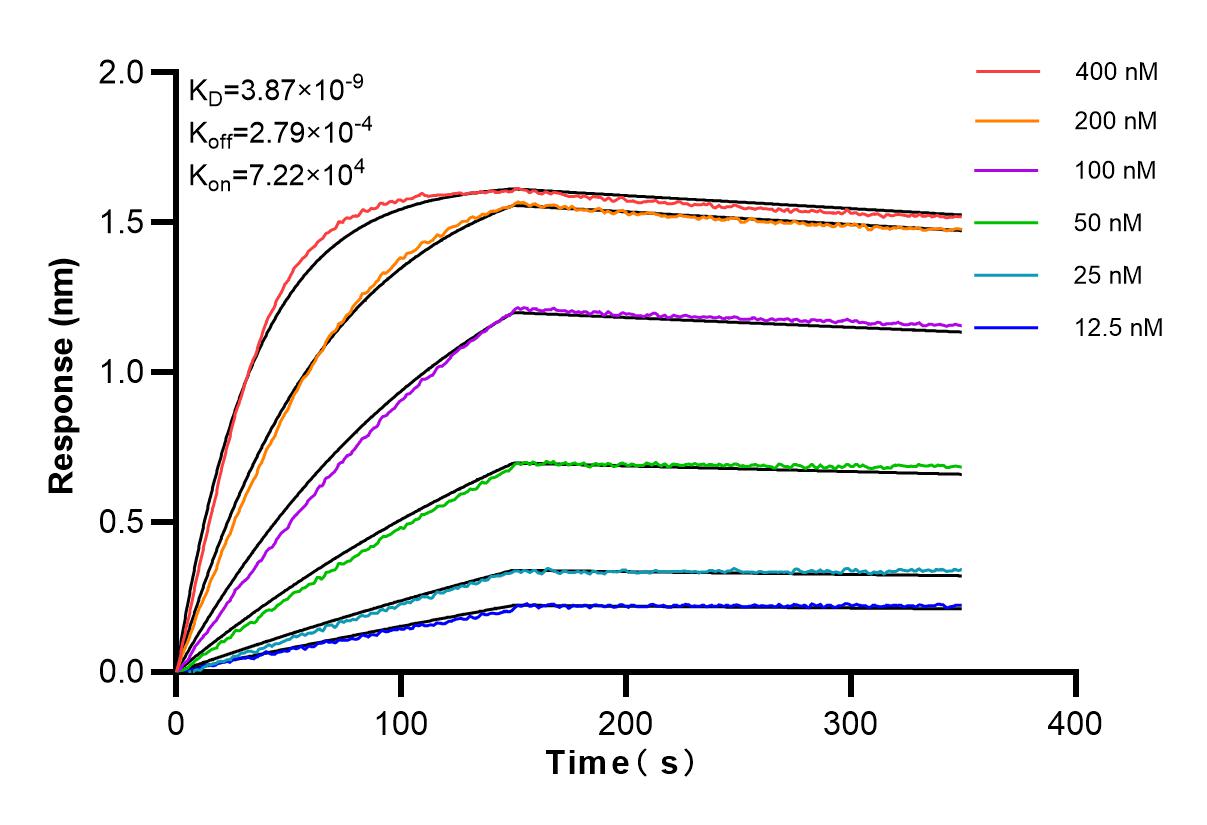- Phare
- Validé par KD/KO
Anticorps Recombinant de lapin anti-MPO
MPO Recombinant Antibody for WB, IF/ICC, FC (Intra), Indirect ELISA
Hôte / Isotype
Lapin / IgG
Réactivité testée
Humain
Applications
WB, IF/ICC, FC (Intra), Indirect ELISA
Conjugaison
Non conjugué
CloneNo.
3J17
N° de cat : 81610-1-PBS
Synonymes
Galerie de données de validation
Informations sur le produit
81610-1-PBS cible MPO dans les applications de WB, IF/ICC, FC (Intra), Indirect ELISA et montre une réactivité avec des échantillons Humain
| Réactivité | Humain |
| Hôte / Isotype | Lapin / IgG |
| Clonalité | Recombinant |
| Type | Anticorps |
| Immunogène | MPO Protéine recombinante Ag17564 |
| Nom complet | myeloperoxidase |
| Masse moléculaire calculée | 745 aa, 84 kDa |
| Poids moléculaire observé | 59 kDa, 90 kDa |
| Numéro d’acquisition GenBank | BC130476 |
| Symbole du gène | MPO |
| Identification du gène (NCBI) | 4353 |
| Conjugaison | Non conjugué |
| Forme | Liquide |
| Méthode de purification | Purification par protéine A |
| Tampon de stockage | PBS only |
| Conditions de stockage | Store at -80°C. 20ul contiennent 0,1% de BSA. |
Informations générales
The MPO gene encodes myeloperoxidase, a lysosomal hemoprotein located in the azurophilic granules of polymorphonuclear (PMN) leukocytes and monocytes. In response to stimulation, MPO is activated into a transient intermediate with potent antimicrobial oxidizing abilities(PMID:17650507). The mRNA is translated into a single protein of 90 kDa, which displays enzymatic activity and undergoes proteolytic maturation into a heavy chain of 59 kDa and a light chain of 13.5 kDa; these subunits then dimerize into the mature tetramer and the mature MPO is a heterotetramer composed of two identical heavy chains and two identical light chains(PMID:12773517). Fragments with molecular masses of 43-47 kDa were formed by autocatalysis during warming in sample buffer (PMID:12960244).The 24-kDa material had a map identical to that of 13.5 kDa subunit and represents a dimer of the 13.5 kDa subunit (PMID:3008892). Defects in MPO are the cause of myeloperoxidase deficiency (MPOD). It has 3 isoforms produced by alternative splicing.
